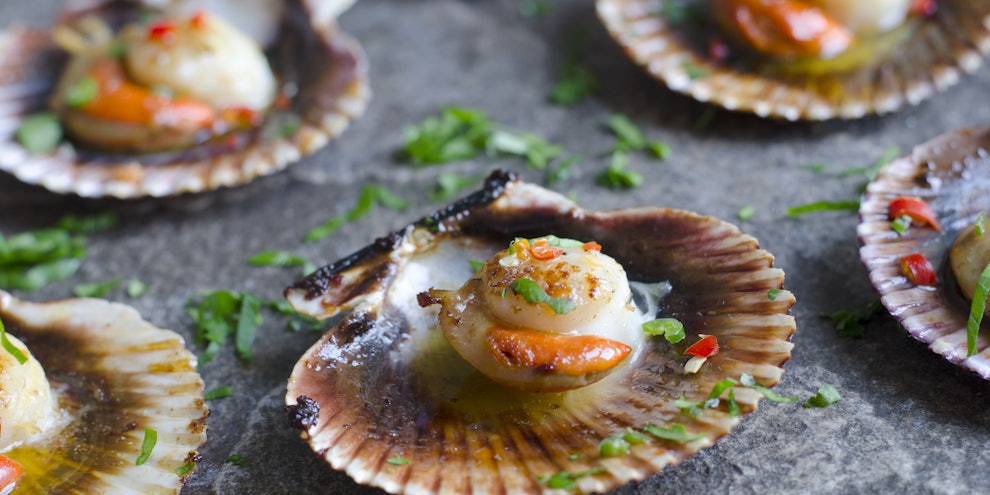How To Cook Scallops
How to achieve that perfect sear

It doesn't take years of culinary training to cook sea scallops correctly, it just takes a little thermal know-how and a good pan.
Once done right, this dish instantly adds a touch of class to your next family gathering.
While you can bake scallops or use them in soups or any number of other preparations, the classic—and, really, the best—method for preparing scallops is a high-heat sear. This will give your scallops a crusty exterior that is a prize on any table. But getting a perfect scallop doesn’t mean just picking one up and tossing it in a pan. There’s a little prep that needs to be done first.
As you are preparing to cook your scallops, sort through them individually and look for any that still have the “foot” attached. This is the “catch” muscle that is used by the scallop to hold its shell closed. It is filled with connective tissue and is quite tough. This muscle should be removed by simply pulling.
Before you put your scallops in the pan, you need to pat them dry. Use paper towels or a lint-free cloth to dab them off, especially on their flat surfaces. You do this to encourage a good sear: if a wet scallop goes into a pan, all the heat will be channeled into evaporating the water before the scallop has a chance to cook.
One key to good scallops is a good pan. By “good pan” we mean a cast-iron or black-steel pan. These pans are important because of their thermal properties. They have high heat capacity, which means they can hold a lot of heat energy in them, and their construction allows for much more even temperatures across the surface of the pan. The high heat capacity of your pan allows you to get a good sear on your scallops.
Once you have a good pan, you need the right oil. You’re going to be cooking these little beauties at temperatures above 232°C, so you need an oil that can withstand that kind of heat. Clarified butter is best, but peanut oil or rice-bran oil are good candidates, as well. (Don’t use whole butter. It will burn and smoke. And olive or canola oil will begin to break down at those temperatures.).
Finally, as hinted above, searing scallops is about high heat. You’ll want to heat your pan to around 232°C or higher before you add your scallops. Heat the pan over medium-high heat, adding the oil at the beginning of the heating. Once you’ve reached a high enough pan temperature, carefully add the scallops to the pan. And let them sit there.
Resist the temptation to check them for browning for at least 1-2 minutes. You want to allow your scallops to come up to temperature and develop good contact with the hot pan. Your scallops may stick to the pan, at first, or they may not. If they do, wait for them to release on their own, as that release will indicate that the proteins have restructured themselves to form a nice crust, rather than trying to cling to the pan. If they don’t stick, tip them to one side briefly to allow more hot oil to run in underneath them before tipping back down flat—the oil will help facilitate the sear.
Either way, check them after 1–2 minutes to make sure that they are browning and not scorching. If they are still pale, let them keep cooking until properly seared. If they are golden brown and crusty, flip them over. After flipping, beware that your pan is getting pretty hot by now. If the oil starts to smoke a lot, turn your heat down some while you finish cooking the scallops.
Once your scallops are done, get them out of the pan and onto a plate as soon as possible. If they overcook, they become rubbery and chewy, in contrast with the tender, almost silky feel they get when they are done right.